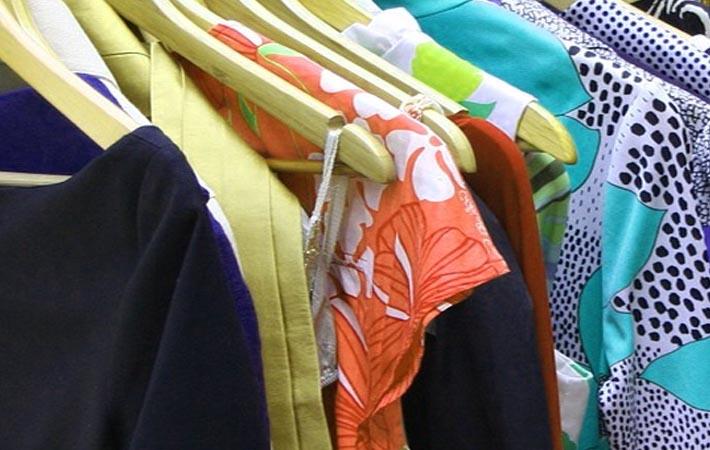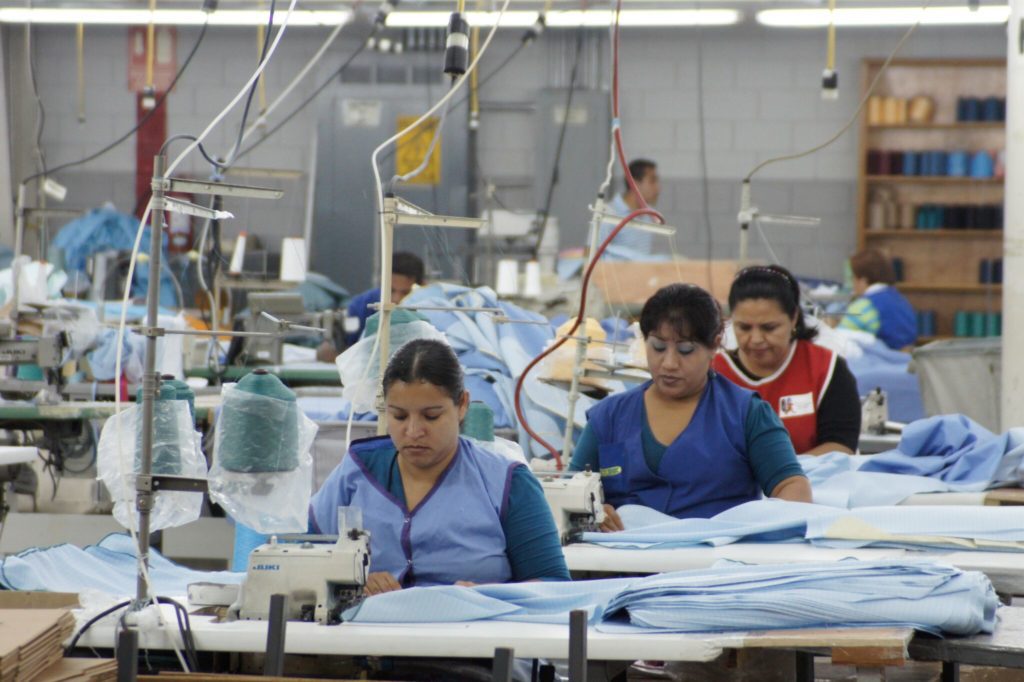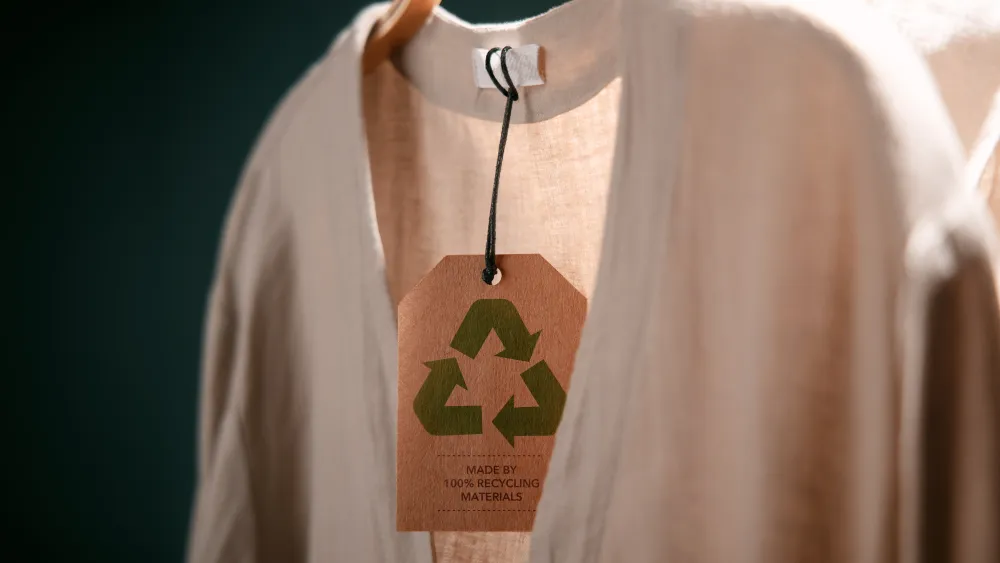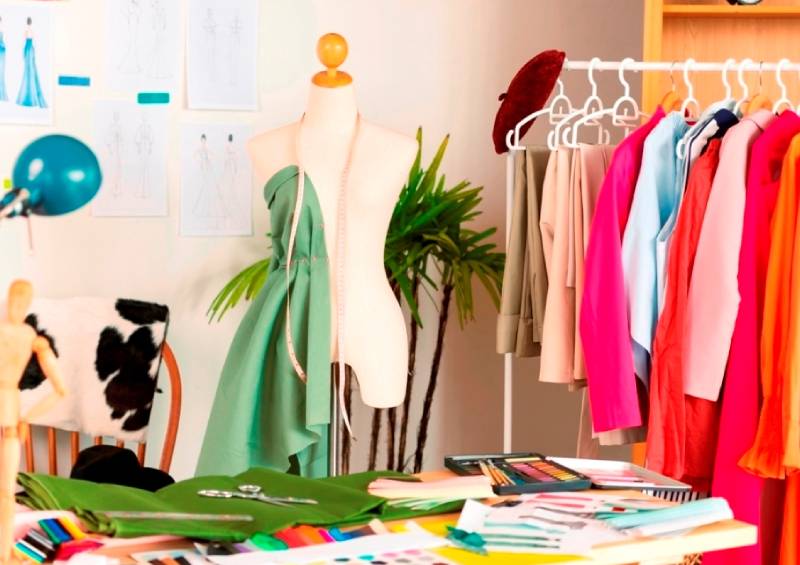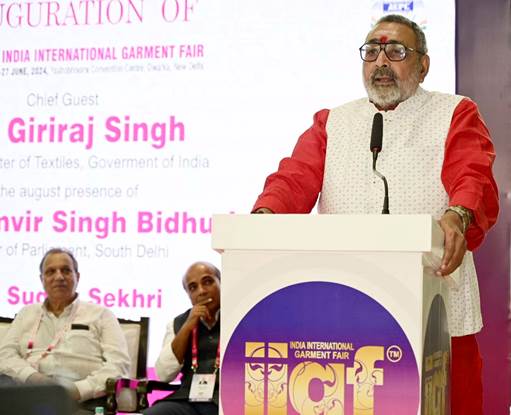FW
India Show organized by Confederation of Indian Industry (CII), concurrently with the Hong Kong Spring Fair showcased the country's strengths in textiles, clothing, handicrafts and household goods. The show was held in association with the Ministry of Commerce and Industry and the Consulate General of India in Hong Kong from April 27-30, 2014.
The exhibition had on display a wide range of products from home products, to garments and fashion accessories. Many of the world’s largest suppliers participated showcasing their range of products. Indian participation at Hong Kong Fair is largest ever comprising of over 200 players from the industry.
An India evening held during the fair showcased fabric collection of India and various fashion designers displayed their exquisite work. Hong Kong Spring Fair 2014 is Asia's largest spring fair organized by the Global Sources and held at the Asia World Expo. The fair attracted over 2,700 booths and offered a unique platform to suppliers to reach out to buyers from over 114 countries.
 With Bangladesh in the news for all the wrong reasons, many fashion brands and retailers are exploring alternate sourcing destinations. And Turkey is emerging as a good option for them. Over the last decade, the country has emerged as the fourth largest supplier of clothing in the world and a leading sourcing destination for Europe.
With Bangladesh in the news for all the wrong reasons, many fashion brands and retailers are exploring alternate sourcing destinations. And Turkey is emerging as a good option for them. Over the last decade, the country has emerged as the fourth largest supplier of clothing in the world and a leading sourcing destination for Europe.
The textiles and garments industry is one of the most important driver of Turkey’s economic success and contributes about 8 per cent to the country’s GDP and $30 billion in production value. After attracting global attention as the next sourcing hub, Turkish Clothing Manufacturers Association has set out an ambitious target of reaching an export figure of $100 billion by 2023. However, studies point out that to reach the target, Turkey needs to perk up and invest in technology, sustainable supply chain and workforce.
Measures to achieve the target
To achieve its long-term goal, Turkey has started developing its own international  brands and clothing chains, such as LC Waikiki, which has over 400 stores. However, after the Rana Plaza disaster in Bangladesh a year ago, experts say that to further leverage its geographic position between the European Union and the Middle East and its strong industrial base, Turkey must invest in R&D for product innovation, sustainable supply chains to attain its high growth plan.
brands and clothing chains, such as LC Waikiki, which has over 400 stores. However, after the Rana Plaza disaster in Bangladesh a year ago, experts say that to further leverage its geographic position between the European Union and the Middle East and its strong industrial base, Turkey must invest in R&D for product innovation, sustainable supply chains to attain its high growth plan.
Rana Plaza collapse drew world’s attention to the poor working conditions in emerging export destinations. Several research groups and labour organisations have now undertaken a survey responsibility to figure out and improve factory conditions in such regions. Leading players are now contemplating over how they can make supply chains compliant and transparent while remaining efficient.
Impact Economy report on compliance
Impact Economy too carried out a survey to find out whether it is possible to take the Turkish industry to a much higher level of social and environmental performance, while keeping it competitive. Over eight months, the company spoke to over 730 stakeholders and screened more than 200 reports apart from conducting expert interviews, studying several sourcing countries and consumer markets. The resulting report ‘Creating Sustainable Apparel Value Chains’ argued that greater total resource productivity and transparency, upgrading industry infrastructure by (impact) investing, improving working conditions with a new level of ambition, and replicating best practices of leading players can together unlock the next level of viability and sustainability.
The report suggests tackling working conditions in emerging market sourcing locations as the first priority. The key, it says is redefining labour as an asset, rather than just a cost. Next is lean manufacturing or achieving greater total resource productivity and transparency across the supply chain via front-of-pipe process design, and energy efficient infrastructure. Third is building sustainable supply chain and fourth measure suggested by the survey says that sustainable sourcing will become a necessity to compete, as it already has in other industries.
www.impacteconomy.com
Kenya's textile sector is finding it tough to attract investors. Among the problems are the high cost of power and labor, political insecurity and huge gaps within intermediate sectors of the cotton value chain. Ginners and spinners make use of obsolete technology and equipment. As a corrective measure, the African Cotton and Textile Industries Federation will organize a farm-to-fashion value chain campaign called Origin Africa from November 10 to 12, 2014. The two-day expo will try to advance the image of Africa as a place to do business in.
The event aims to make the continent more visible as a source of supply of cotton, textile products and fabrics for international buyers. This edition aims to make Kenya, where cotton is mainly grown by small scale farmers into a number one sourcing destination for textile and apparels. Players in the industry now want farmers in the continent to take on to value addition so as to increase farmers’ earnings, and also provide jobs for the 11 million unemployed youth in the country.
Origin Africa is dedicated to improving the African cotton, textile and apparel trade. It involves collaboration with producers across the cotton value chain from farm to fashion including accessories suppliers, home textile and décor to develop, guide and promote African trade.
www.originafrica.org/
Invista and Solvay have signed a settlement agreement that resolves disputes related to adiponitrile (ADN) intellectual property and technology in use at their nylon 6,6/66 intermediates Butachimie joint venture in Chalampé, France. The settlement confirms Invista’s exclusive ownership of the ADN technology at Butachimie and includes a plan to upgrade the facility with Invista’s latest and most advanced ADN technology. The planned upgrade would be one of several components in a new joint venture relationship between the two companies.
Retrofitting Butachimie with Invista's newest ADN technology is expected to dramatically increase the plant’s efficiency. The Butachimie joint venture has been operating for 40 years, and is the world’s largest ADN facility. The nylon 6,6/66 intermediates made at Butachimie are used to make nylon 6,6/66 fibers and polymers that ultimately become part of air bags, automobile parts, carpet, workout apparel, outdoor equipment and more.
Invista is based in the United States. It has leading brands like Lycra, Coolmax, Cordura and Stainmaster. It is one of the world’s largest integrated producers of chemical intermediates, polymers and fibers. The company’s advanced technologies for nylon, spandex and polyester are used to produce clothing, carpet, car parts and other everyday products.
Solvay is a producer of essential chemicals including soda ash, caustic soda, hydrogen peroxide and special chemicals such as fluorinated products, ultra-fine fillers, high purity barium and strontium.
www.solvay.com/, www.invista.com/en/index.html
A team from the BUET (Bangladesh University of Engineering and Technology) surveyed some 252 garment factories and has said 4 per cent of these might require evacuation. BUET is likely to recommend suspension of production in 10 assessed readymade garment units. It says of the 252 factories, about 25 per cent are in a relatively risky condition structurally. BUET has already submitted its findings on 50 surveyed garment factories to the government. Of the 50 factories, the team has recommended Detailed Engineering Assessment (DEA) for six manufacturing units as they have fire, electrical and structural faults.
Many factories were found to have inadequate number of fire extinguishers or lack capacity for regular use of those equipment. These units also did not have appropriate stairs or had narrow ones, and lacked water reserves and fire doors or had no fire door at all.
BUET has been assessing these garment factories since November 15, 2013. The Bangladesh government, in association with the International Labor Organisation, is carrying out the project to inspect about 1500 garment factories that remain outside the inspection purview of Accord or Alliance. The Accord on Fire and Building Safety in Bangladesh is an initiative by European Union retailers. Alliance for Bangladesh Worker Safety Initiative is a program of North American retailers.
www.buet.ac.bd/
Monforts Textilmaschinen, a leading textile machinery manufacturer, will be introducing its new modular interchangeable coating system for technical textiles, the Montex-Allround, at ITMA Asia in Shanghai to be held from June 16 to 20.
The new modular coating system is said to ensure an ease of adapting to the coating method required. The new patented concept provides the solution to integrate a wide variety of coating, printing and other innovative application techniques, according to the company.
The position of the coating head directly within the fabric in feed of the stenter ensures the shortest distance between the in-feed and the coating head, which is essential for high quality coating processes. The Montex-Allround also features individual modules for knife and slot die coating, as well as modules suitable for flexo, gravure and rotary screen printing.
Integration of special modules such as powder scattering and spraying is also possible. The modules are carried, cleaned and moved with a specially-designed trolley, which provides easy access to the side of the stenter infeed with the minimum downtime. An explosion proof cabinet for treating certain solvents is also available for the new modular unit ensuring safe operation with the operator standing outside the enclosure.
Monforts is a leading manufacturer and exporter of textile machines since 1884. Innumerable patents and pioneering achievements in textile finishing have marked the company’s way to today’s leading position in the market.
Monforts.com
African Cotton and Textile Industries Federation has sought government’s assistance in setting up a technology upgrade fund which will enable local cotton millers to transition to new technology. According to Federation's Executive Director, Jaswinder Bedi, such an initiative will help in reducing the high cost of cotton production and the value chain in the Kenyan cotton industry will be more visible as a source of cotton, textile and apparel products for the domestic, regional and international markets.
According to Bedi, revived cotton sector has the capacity to create 500,000 jobs by the end of 2015. Kenya has its own raw material resource coupled with the social and environmental issues around the textile and apparel supply chain. If these issues are tackled in time, Kenya can emerge as the next big investment and sourcing destination having direct access to cotton.
With many global apparel buyers diverting their attention to Africa because of the duty free privileges the United States offers through the African Growth and Opportunity Act (AGOA), Export Processing Zones Authority Managing Director Cyrille Nabutola has assured cotton farmers of the government’s assistance to improve the investment environment including lowering the cost of electricity and marketing Kenya as top sourcing destination for global companies.
Swedish brand Hennes & Mauritz (H&M) launched several sustainability initiatives last year, including its first closed loop collection made with 20 per cent recycled materials from collected garments. Almost all of its stores worldwide participate in its garment collection initiative, first launched in 2012. Last year, the company collected 3,047 tons of unwanted garments. H&M also launched its roadmap for fair living wages. Based on the Fair Wage Network’s methodology, the goal for the roadmap is for all of its strategic suppliers to have improved pay structures to put fair living wages in place by 2018 which will affect around 850,000 workers.
H&M’s 12th sustainability report details all measure it is taking to create sustainable future. The company doubled its share of sustainable cotton in the last two years to 15.8 per cent with 10.8 per cent being certified organic, Better Cotton certified 5.0 per cent, and recycled 0.01 per cent. The goal is for all of its cotton to come from organic cotton, recycled cotton, and Better Cotton certified sources. H&M is already one of the world’s biggest users of certified organic cotton. Sustainable fabrics make up 11 per cent of the fabrics used in H&M’s products, an increase from 9.1 in 2012.
H&M’s goal will increase the share of sustainable fabrics every year. The company is working on reducing the use of solvent based glues in its shoes because they can be harmful to workers. In 2012, H&M produced seven million pairs of shoes with safer water based alternatives. A year later, the company decided to set a goal of phasing out solvent based glues by 2020. It has already achieved a 21 per cent rate for all of its shoes.
H&M has a goal of reducing overall greenhouse gas emissions by 2015. Since electricity use in its stores represents over 70 percent of its GHG emissions, it wants to use only renewable energy sources. In the UK and the Netherlands, H&M has already achieved 100 per cent renewables use. In 2013, 18 per cent of its electricity used worldwide came from renewable sources. The clothing retailer is also focusing on reducing energy use, with a goal of reducing energy use per square meter by 20 percent by 2020. It achieved a 14 per cent reduction in 2013, and that same year, the company installed over 65 per cent of its stores with electricity meters.
H&M wants to make its supply chain more sustainable. For that reason, it signed a pledge in 2011 to not knowingly buy cotton from Uzbekistan because forced child labour is common in Uzbeki cotton fields. In 2013, H&M required all of its suppliers to sign a commitment to not knowingly source any cotton from Uzbekistan. In 2009, the company introduced requirements not to source from any factories located in buildings shared by several companies so the factory can maintain safety control. Two years later, it introduced a training program to increase fire safety awareness among its suppliers and their employees through the use of short films. Through the program, over 300,000 workers and middle managers in Bangladesh have been trained. H&M was the first company to sign the Accord on Fire and Building Safety in Bangladesh in spring 2013; by the end of the year, over 100 brands signed. The Accord is a legally binding agreement created as a result of a factory building collapse in Bangladesh in April 2013 which killed over a 1,000 workers.
www.hm.com
 Cotton is no longer the king of fibres, for synthetic is surging ahead to grab the lead. As per the National Cotton Council, the shift toward synthetic fibers has accelerated. As per their report, cotton began to drift away during the financial crisis in 2008 when retailers were forced to cut costs without raising product prices. Manufacturers adopted synthetic blends that cost less compared to cotton.
Cotton is no longer the king of fibres, for synthetic is surging ahead to grab the lead. As per the National Cotton Council, the shift toward synthetic fibers has accelerated. As per their report, cotton began to drift away during the financial crisis in 2008 when retailers were forced to cut costs without raising product prices. Manufacturers adopted synthetic blends that cost less compared to cotton.
Move from cotton to synthetic
And when cotton prices soared in 2011, clothing manufactures continued using synthetic fibers over cotton. From 2007 to 2013, women’s and girl’s jeans and khakis sales rose 10 per cent to 1.4 billion units sold. The overall cotton content found in the clothing had declined by seven per cent. Industry experts say that in 2014, the US will have more clothing made from synthetic materials than cotton. For instance, the US Department of Agriculture estimates global consumption for cotton to be at 109.2 million bales, a 12 per cent drop from 124 million bales in 2006. Cotton prices have increased from 0.51 cents a pound in 2009 to 0.93 cents a pound in 2013.
The move towards synthetic is also evident with rising number of textile mills 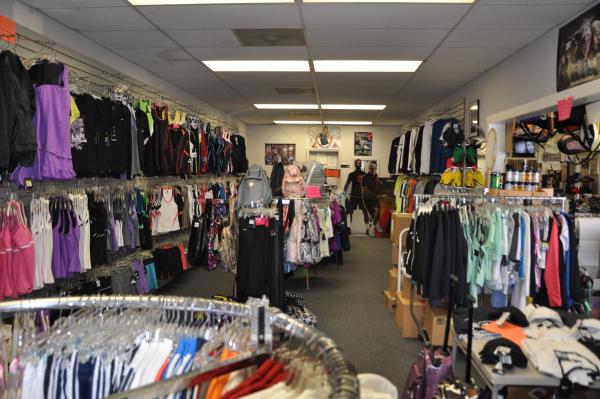 reconfiguring their machinery to run synthetic fibers. The less expensive synthetic blends require less ironing, which also means less cost for consumers. Research report by Euromonitor International US confirms the shift, saying, synthetic clothing has grown by 14 per cent since 2007. Cotton clothing increased in the apparel market by only 2.7 per cent during the same period.
reconfiguring their machinery to run synthetic fibers. The less expensive synthetic blends require less ironing, which also means less cost for consumers. Research report by Euromonitor International US confirms the shift, saying, synthetic clothing has grown by 14 per cent since 2007. Cotton clothing increased in the apparel market by only 2.7 per cent during the same period.
Brands focus goes up on synthetic
Due to the constant rise in cotton fabric prices apparel makers and brands are increasingly weaving synthetic fibers into clothing that was once made up of 100 per cent cotton. The synthetic range is visible in high-end brands to mass-market retailers. For example, jeans from Los Angeles-based seller AG, which specializes in premium denim, are made from cotton, lyocell and polyurethane and cost $168. American Apparel sells a $22 dollar T-shirt that is a blend of polyester, cotton and rayon and a dress from H&M made from rayon and spandex costs $12.95.
This year, US imports of clothing made using synthetic materials are expected to witness a huge growth outpacing cotton apparel for the first time in more than two decades. As recently as 2008, 60 per cent of apparel imports, the vast majority of the US clothing market were made of cotton. But consumers as well as brand already seem to have made a shift.
For example, Under Armour became a $2.9 billion, a year business selling athletic gear made with synthetics including polyester, the oil-based fabric once associated with leisure suits and golf pants. Under Armour began as a supplier of moisture-wicking T-shirts to sports teams. Now, it sells a range of apparel, offering women's pants in fabrics that are a mix of nylon and spandex and fleece hoodies containing polyester. And at Lululemon, some tops and bottoms are manufactured using a technology that reduces stink during work out. Growth of synthetic fibers has been a recent phenomenon of last five years. As consumers got used to wearing polyester and spandex, basic apparel makers like Hanes Brands introduced blended man-made fibers into all-cotton products, such as underwear.
With high cotton prices negatively affecting the product prices, industry experts feel that it is less likely that retailers will return to the natural fiber. And since most of the consumers first look at the prices than the fabric used to create a particular product, synthetic seems to be a way forward.
China Hosiery Purchasing Expo show-CHPE a show for high end hosiery products like socks, tights etc, last month, was full of optimism inspite of the challenges China is facing in export business. Exhibitors and visitors felt China is facing a number of challenges at the moment and as a result becoming more expensive. Wages have gone up leading to a shift in manufacturing to other countries. Emphasizing on this, Ahsan Ghazanfar-Dynamic Sportswear (socks manufacturer) from Pakistan says, “We have to make use of this opportunity. So we have to become more aggressive in marketing.”
As far as the business environment is concerned, the market is witnessing growth in different countries. Although the economic situation is not so good still the business mood is positive. Organizations are pinning their hope on 2014 for better growth. Sharing this optimism, Ghazanfar sats, “The buying power in Europe and US has gone down. Cost of production in India, Pakistan and Bangladesh is rising. We have to be more competitive on price points.” On the other hand the business environment in China is getting better and better in the domestic market but the same cannot be said for Russia. Richard Wang, Invista-China office hopes to maintain business. “People who are not focused will have a difficult time. The focused ones will be the clear winners. In a country like China which has many opportunities it’s easy to lose focus.”
Talking about the business perspective, Wang, said, “The global economy is good. Business is not a problem since everyone needs clothes. The question is how you meet the customers’ needs. You need to do innovation and pay attention to details.” Invista is focusing on promoting fusion Lycra fibre. It’s a new product and has been in the market for around three years. “It can improve the durability of hosiery and India will soon hear of it,” says Wang.

